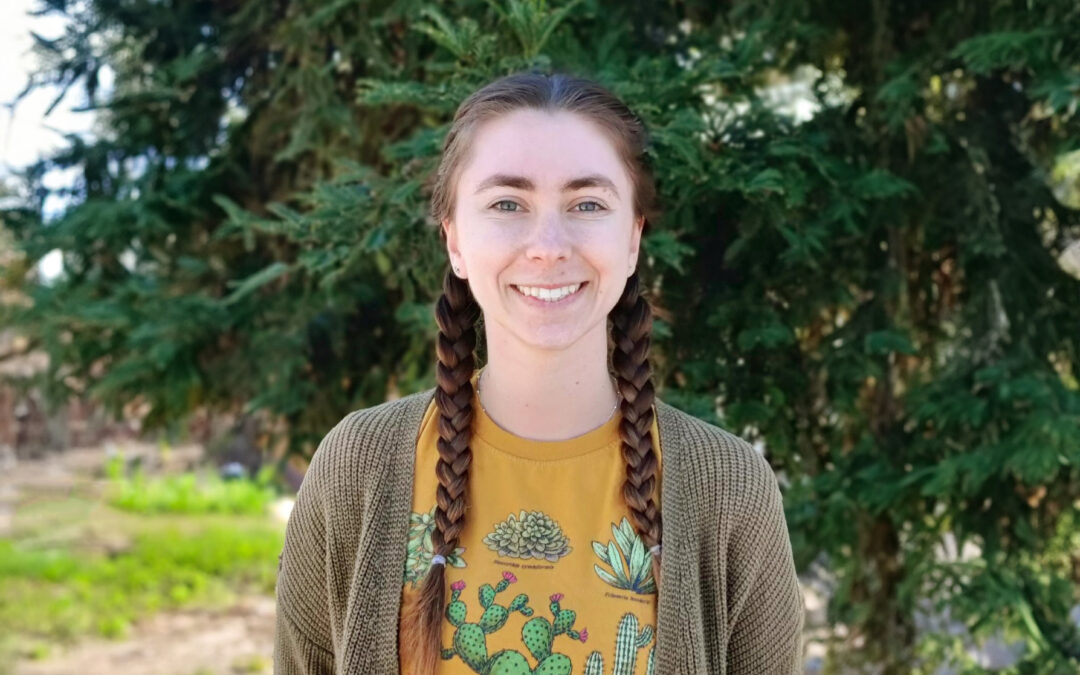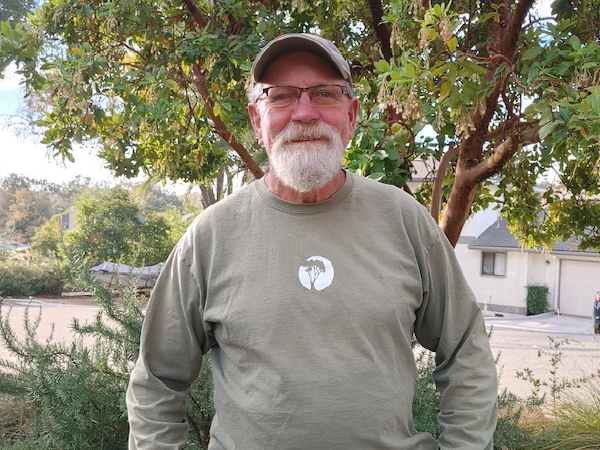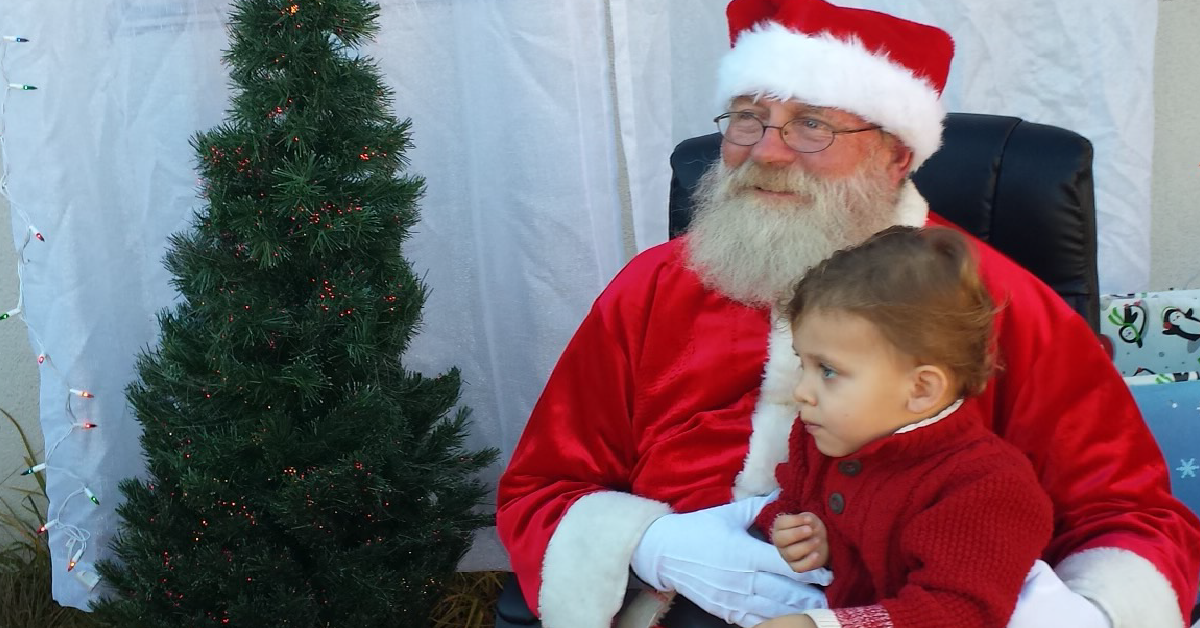
Aug 30, 2021
Madrone extends a warm welcome to Tyler Ellison, who recently joined our landscape design team. With his functional and pragmatic approach, he fits right in! He is detailed yet practical in his designs, ensuring his fresh ideas are both buildable and unique. He loves meeting new friends, listening to their needs and experiences, and working alongside them to create a space they can enjoy and call their own. We look forward to tasting his homemade mac & cheese!
How did you end up at Madrone?
After finishing both the Landscape Architecture and MBA programs at Cal Poly SLO, I was looking to join a Central Coast landscape design company. I worked for around two years for a landscape architecture firm in San Luis Obispo. I have always been a designer and “maker” – so I jumped at the opportunity to work for a design/build company.
What is your favorite thing about working at Madrone?
My favorite thing about working for Madrone is people—both in and out of the office—and the diversity of opportunities it brings me as a young designer.

Sometimes I use Sketchup to help visualize design features and the feel of a space.
What do you enjoy most about your team/department?
I enjoy the unique strengths of each individual, and the various perspectives they lend to design and installation. Their feedback and crititique is a welcome challenge and completely necessary for any young creative.
What do you enjoy most about being a landscape designer?
I enjoy meeting new people and hearing their dreams for a space, and collaborating with them to design a space that is functional, unique, and beautiful.
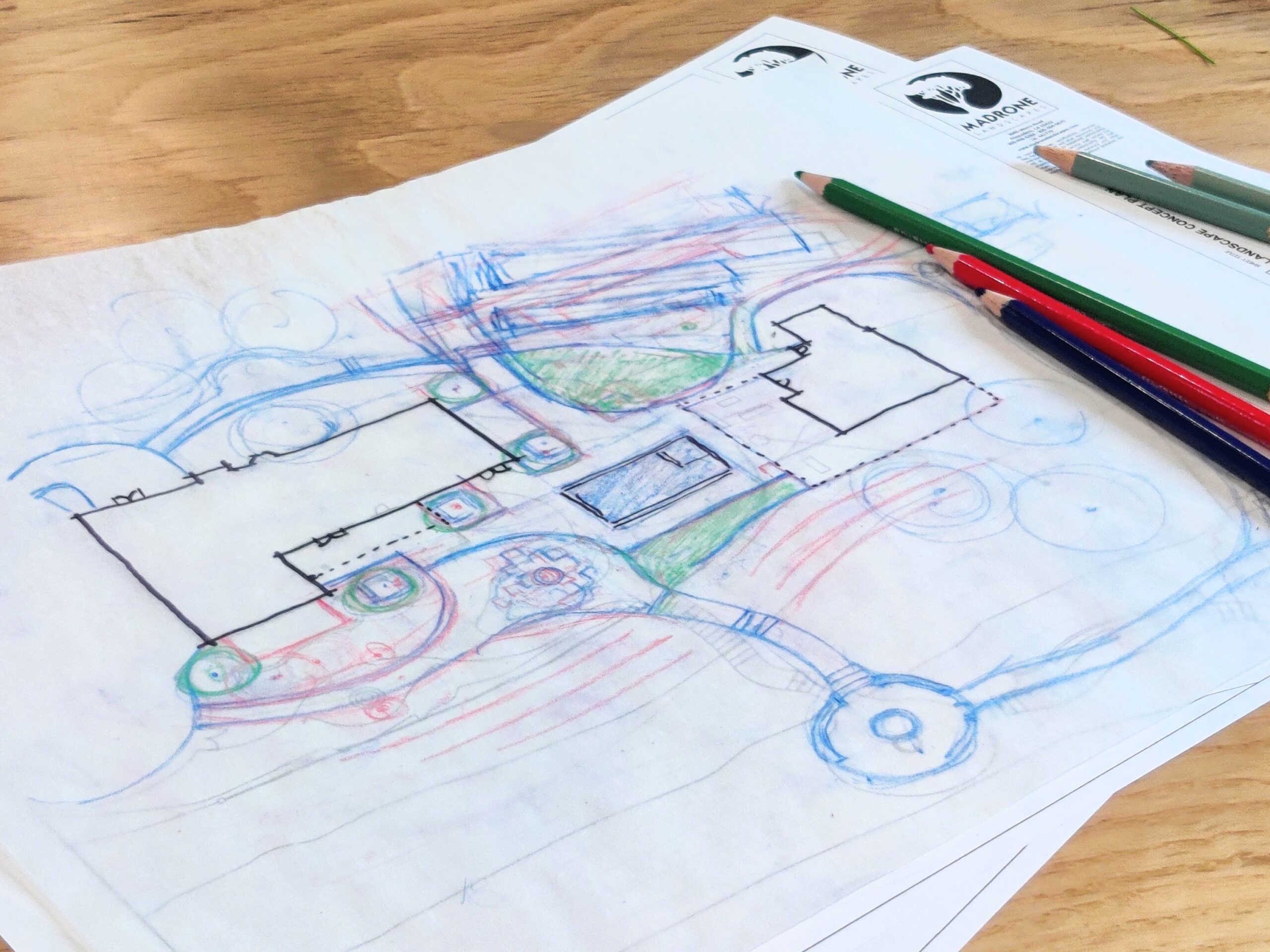
I enjoy the sketching process starting out any new design.
I love the bold statement of a gold Bougainvillea, but also the softness of a variegated thyme along a path. I would consider Platinum Beauty Lomandra to be my favorite and most versatile landscape planting element. I unambiguously dislike Bradford Pear trees—massively overplanted, messy, susceptible to disease, and structurally weak, to name a few characteristics.
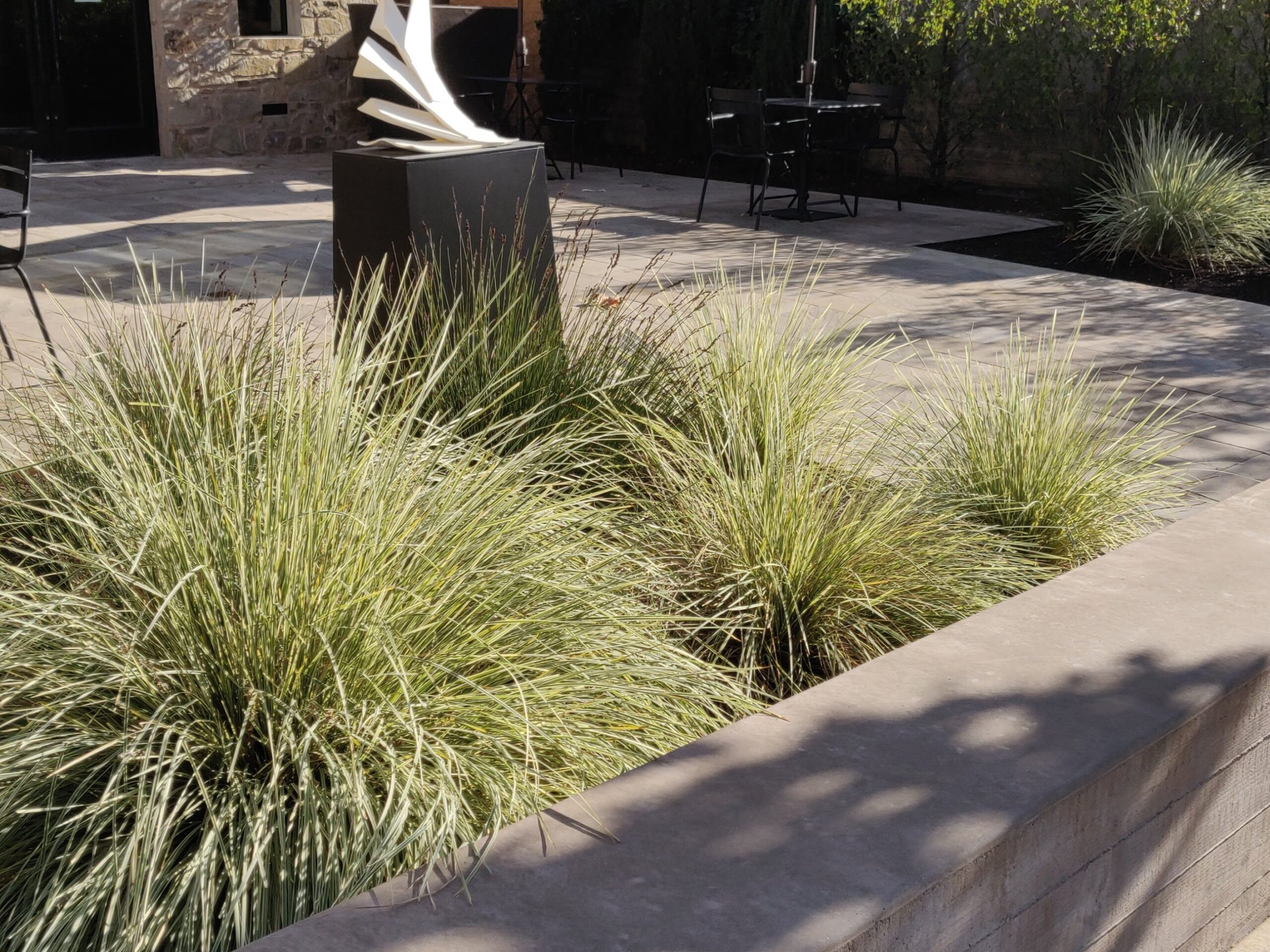
Photo of Platinum Beauty Lomandra from a favorite breakfast spot in Yountville, California.
What are some of your favorite hobbies outside of work?
Since my first art show in early 2020, I have continued to paint and sell art through an online portfolio, ellisondesigns.com. I love people, plants of all types, exploring new places, live jazz, brewing craft ginger beer, and developing a line of custom reclaimed wood furniture.
Give us a fun fact about you!
If landscape design doesn’t work out, you will find me opening a food truck that serves made-to-order macaroni and cheese and a variety of crunchy and savory toppings.
Ready for a landscape design and want to talk to a professional? Contact our landscape designers at [email protected] or (805) 466-6263.
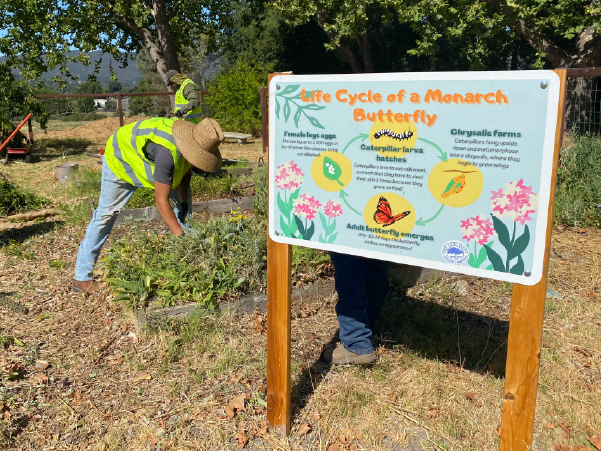
Aug 19, 2021
Late in 2019, Madrone partnered with One Cool Earth, a non-profit organization that creates garden-based school programs. We committed crews to improve and maintain gardens at six Atascadero School District schools. Shortly after our discussion, the entire program was put on pause as schools employed health and safety measures.
As kids head back to campus this month, Madrone has been busily preparing the outdoor classroom sites. Our team worked on each garden used for One Cool Earth’s Earth Genius program, rejuvenating and preparing the sites for a new school year. From mulching and weed abatement to repairing hardscape, we spent a few days ensuring that each school can rely on a garden space that will enrich them throughout the year. One Cool Earth educators can now visit each week and rely on a revitalized garden to teach about nutrition and the environment.
Madrone and One Cool Earth share and reinforce one another’s values: giving back, stewardship, and innovation. We look forward to a long and fruitful relationship.
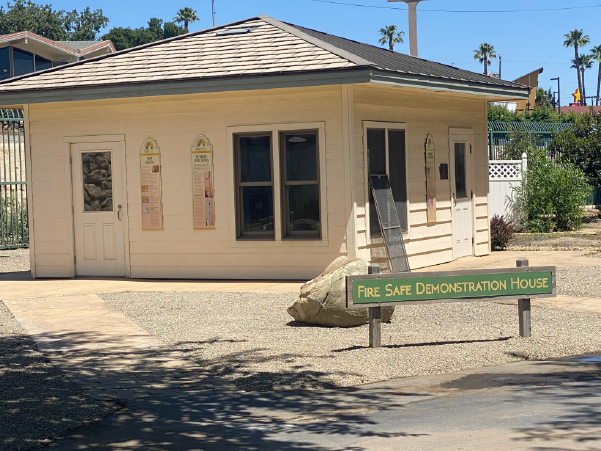
Jul 12, 2021
Learn how to make your landscape defensible during fire season
At Madrone Landscape, we have dealt with properties in high fire danger areas for decades. There are many ways to enhance a property’s defensibility, whether through plant selection and design or irrigation and water system strategies.
Visitors to the 2021 Mid-State Fair in Paso Robles will be able to see for themselves some of these best practices at the Fire Safe Demonstration House for view from July 21st to August 1st. The model property will show strategies for living in fire-prone areas around the Central Coast, especially appropriate as fire season comes upon us.
The multi-phased project will be developed over the next couple of years, and Phase One is getting ready for this year’s Fair. After re-grading, tearing out old plants, and doing a weed abatement, Madrone transformed the space into a simple gravel landscape (one of the best options for fire safety). The open gravel area will accommodate shaded seating, a proposed “Hydration Station,” and educational messaging to help people visualize how they can keep their properties fire-safe. A future phase will feature a mobile multi-media educational exhibit, and the occasional visit by a fire truck.
This community education exhibit was created by the Fire Safe Council, spearheaded by Turko Semmes with Madrone Landscape lending assistance. Semmes and Company built the structure, demonstrating closed eaves and partial straw bale, the latter being three times more fire-resistant than the average material. Also contributing to the fire safe landscaping message is the San Luis Obispo Botanical Garden (SLOBG), whose Fire Safe Demonstration Garden can be viewed daily at the SLOBG grounds off Hwy 1 in San Luis Obipso, near Cuesta College.
Come visit the Demonstration House, a welcome respite from the hot Paso Robles temperatures, featuring shaded seating areas and the only hydration station at the Fair. Bring your water bottle and swing by for a fill-up!
